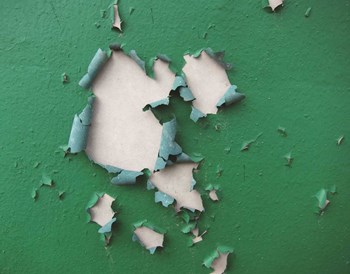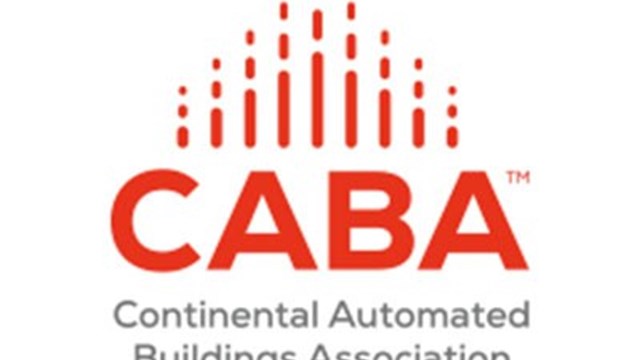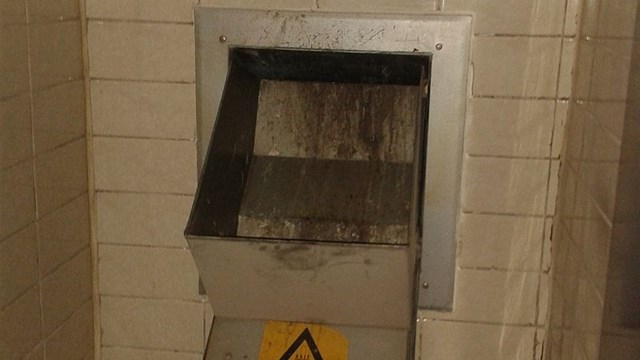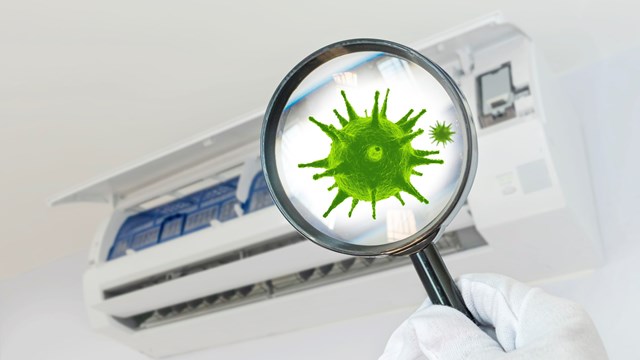
In New Jersey, buying a co-op or a condo goes something like this: Your realtor takes you to see your dream home. You put in an offer—along with a bunch of other people. After a ferocious bidding war, your offer is finally accepted. You submit a bunch of very personal documents (in the case of a co-op at least) and settle in for the interminable wait while all that paperwork is reviewed by what seems like a small army of attorneys.
As part of this process, you may or may not choose to have your home inspected. While home inspections are very common in single-family homes and sometimes conducted in suburban condos, they aren’t as typical in co-op apartments.
Once you move into your new place, you expect that you and your family will live happily ever after. Until, that is, you find out that your dream home is filled with invisible hazards that can make you and your loved ones very sick.
Deadly Lead
While some hazards—things like crumbling masonry, cracked sidewalks and deteriorating windows—are visible even to an untrained eye, other dangers are not so obvious. A few are entirely invisible to the eye and they have no smell or taste, but they are still deadly.
Substances like lead, carbon monoxide, radon and formaldehyde can permeate a building or unit without anyone knowing until it’s too late, and the result can be tragic. According to the U.S. Environmental Protection Agency (EPA), “Lead has long been recognized as a harmful environmental pollutant. There are many ways in which humans are exposed to lead: through air, drinking water, food, contaminated soil, deteriorating paint, and dust. Airborne lead enters the body when an individual breathes or swallows lead particles or dust once it has settled.”
And that's where it does its damage, say the experts. According to the EPA, “Lead affects practically all systems within the body. At high levels it can cause convulsions, coma, and even death. Lower levels of lead can adversely affect the brain, central nervous system, blood cells and kidneys. The effects of lead exposure on fetuses and young children can be severe. They include delays in physical and mental development, lower IQ levels, shortened attention spans and increased behavioral problems. Children may have higher exposures since they are more likely to get lead dust on their hands and then put their fingers or other lead-contaminated objects into their mouths.”
Although New Jersey banned lead based paint for residential use in 1971 and it was banned nationwide in 1978, that didn’t mean that everyone who had used lead paint in his or her unit had to remove it. It just meant that they couldn’t use fresh lead paint. The old lead paint could stay—and much of it still exists.
But the danger of lead paint in New Jersey co-op and condo buildings can be avoided—or discovered and quickly remedied—with a little extra legwork. Condo units must be inspected annually for lead hazards, which include dust from lead paint, peeling or damaged lead paint, lead paint on crumbling plaster or rotted wood or other issues that could harm a child who comes into contact with it, says William Kerbel, president of Environmental Health Investigations with offices in New Jersey and New York.
If any problems are found during the investigations, “The landlord [or co-op/condo board] would have to do repairs,” Kerbel says.
To test for lead in the paint, there’s an x-ray fluorescence instrument that you could use that runs right up against the wall called an XRF Lead Analyzer, but it costs about $8,000. “That’s not something a homeowner will buy,” Kerbel says. “To go in and test an apartment to find out where all the lead is, you’re talking about $300 to $500 to get it done through a professional.”
Lead On...
Deteriorating paint and airborne dust kicked up by a renovation or capital improvement project aren't the only sources of dangerous lead, unfortunately. “Lead could also be in drinking water,” says Harvey Klein, laboratory director for Garden State Laboratories, Inc. based in Hillside. “Lead pipes were common prior to the 1970s.”
Depending on the pipes themselves and the 'hardness' of the water flowing through them, indoor environmental professionals test the chemical parameters of the water. If it’s corrosive, it could result in lead being released into the water, Klein says. Also, if the water pipes aren’t properly grounded, it can accelerate the corrosion of the pipes, again increasing the lead content.
The short-term solution for this is to simply flush out the lines. “Let the water flow until you at least get a temperature change,” Klein suggests. “But in large apartment buildings, you have many floors. That can be a continuing problem, and you have to look at the corrosiveness of the pipes throughout the building, and you may have to treat the water.”
Treating the water could cost thousands of dollars per unit, and every unit is unique in every building. “Four out of five faucets in a building may be fine, and one may have corrosiveness,” he says. “It’s a unique scenario.”
Other Culprits
Lead’s not the only problem lurking within New Jersey walls and pipes. Mold is also very common in New Jersey homes, whether they’re in the city or in the suburbs. That’s because mold comes from water, and water doesn’t care if it’s entering a condo, a co-op, an apartment building or a single-family house.
“I tend to come across a lot of properties that are contaminated with mold,” says Joseph Balzamo, president of Alliance Property Management, LLC in Morristown. “Carbon monoxide and lead have been dealt with a lot more than mold—and there’s no detector for mold like there is with CO or with smoke. Mold isn't necessarily just a problem on the Jersey Shore; it can happen anywhere, from a roof leak or if someone has an ongoing drip. It’s not necessarily indicative of the [geographic] area. If someone has an ongoing drip, mold can be behind a wall and you may not even know it’s there.”
“Whenever you have flooding or severe weather, you’ll have mold,” adds Klein. “It grows well in warm, moist, dark environments. It’s going to happen.”
“The way mold affects a person’s health depends on that person,” says Balzamo. “A person who lives with mold tends to feel sick all of the time, experiencing cold-like symptoms.”
According to experts, if you take care of the mold immediately, it may not be a big, expensive deal. If the mold growth is minimal, you may be able to simply sanitize the area using a diluted non-scented bleach solution. Like anything else however, letting a mold issue fester unaddressed for any longer than absolutely necessary only leads to a bigger, far more invasive and expensive remediation project down the line—and can cause major health problems in the meantime.
There are still other invisible dangers that won't just go away with a little bleach and some water. The use of asbestos, a frequently used building material, dates back to Egyptian times, and it is still being used in many parts of the world as a fire retardant. In the United States, however, it was banned—for new use, anyway—in 1979. Even so, it's not uncommon to find asbestos insulation in buildings and homes built prior to the ban. Like lead, asbestos poses little threat as long as it's undisturbed and the materials surrounding it remain intact—but breathing loose asbestos fibers has been associated with various types of cancer, so it's best to know if your home is host to the stuff, Kerbel says. “Asbestos materials may be in an apartment, but as long as they’re in good condition, they’re not going to pose a threat. But if you’re knocking down a wall, that’s the time to have the wall, tested.”
If you live in a building that was built prior to 1979 and you suspect that it has asbestos, you can find out for sure by hiring a professional inspector to take samples.
Invisible Dangers
There are some toxins that are common in New Jersey’s rural areas that aren’t as common within the city. One of those is radon, which is a radioactive, colorless, odorless, tasteless gas, occurring naturally underground in a wide range of materials from granite to limestone. As an indirect decay product of uranium or thorium, radon is considered a health hazard due to its radioactivity. The federal Environmental Protection Agency (EPA) recommends that the average radon exposure rate indoors not exceed 4.0 picocuries per liter (pCi/L).
The reason why it’s more of a suburban occurrence is because radon comes through the soil and into the home, and is therefore more common in a home which rests directly on the soil. Understandably, the radon levels are typically highest on the lowest level of the home, which means the basement or crawl space of a house or on the first level of a condo unit, Klein says.
It’s incredibly dangerous because it is odorless and colorless so you won’t know that it’s in your home. If you are worried about it, you can contact your local health officials who should know your neighborhood’s radon issues and could better advise you as to whether you should ask a home inspector to do a radon test, Klein says. The actual radon test should cost around $200.
Protecting Yourself
While clean air is always desirable—and environmental hazards do good to no one—there’s no question that some people are more susceptible to the health risks associated with questionable environments. “Elderly, children, and people with other health problems are all at a higher risk,” Klein says.
Having said that, however, it’s difficult to simply quantify which buildings, neighborhoods and areas of New Jersey have less environmental hazards than others.
While it’s true that older buildings did freely allow the use of lead paint and asbestos, many of these units probably have been renovated by now—and there are no hazardous materials remaining. “Typically, there is no sign or symptoms that a building has these toxins,” says Balzamo. “Usually older structures—and by older structures I mean anything built prior to 1978—might have more issues like that then newer buildings, but not necessarily.”
Dealing with potentially deadly substances that can't be seen, smelled or felt is a complicated, scary issue for homeowners, boards and renters. But there are many resources available to help keep everyone safe and healthy. Boards, managers and residents can check out www.EPA.gov/iaq to get detailed information about many different indoor air quality issues, and most municipalities have resources to help property owners and administrators steer clear of danger.
Danielle Braff is a freelance writer and a frequent contributor to The New Jersey Cooperator. Staff writer Christy Smith-Sloman contributed to this article.






Leave a Comment